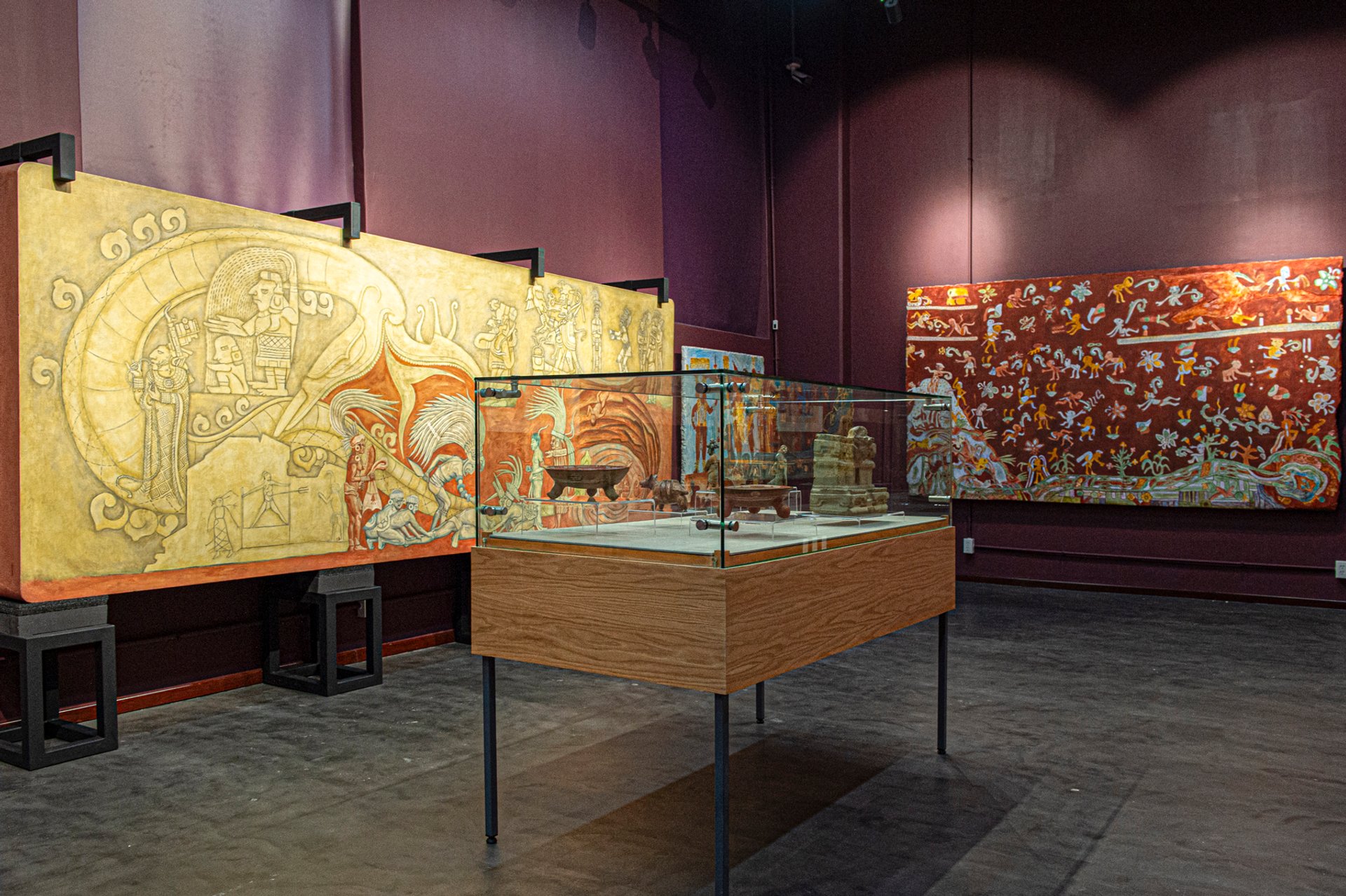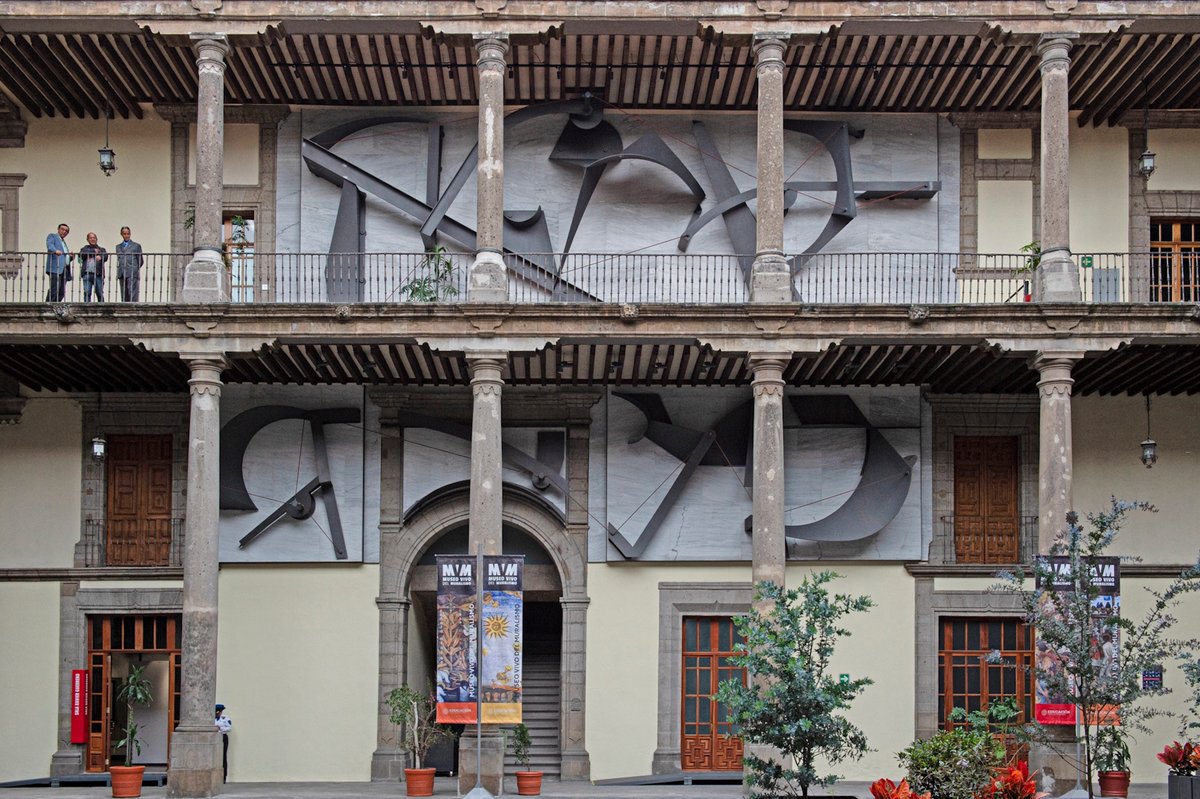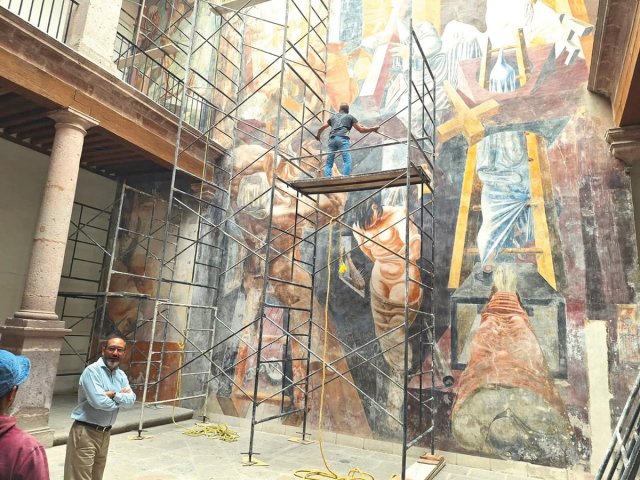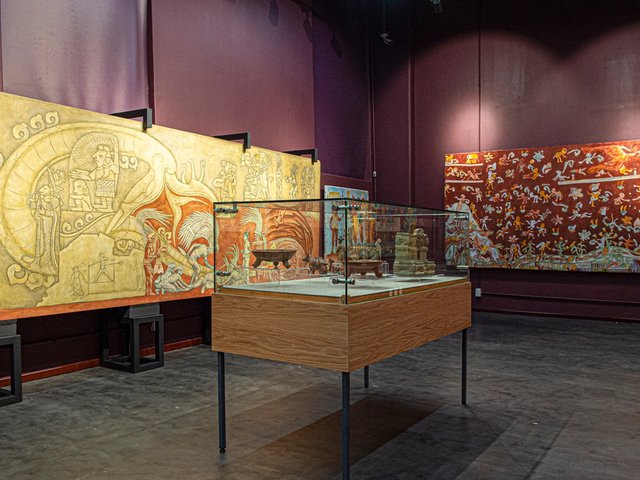The recently opened Museo Vivo del Muralismo in Mexico City’s historic centre showcases more than 3,000 sq. m of murals by Modern artists including Diego Rivera and Roberto Montenegro alongside contemporary ones by Manuel Felguérez. The museum, housed in a building that served as the main facility for Mexico’s Ministry of Public Education (SEP), stands in a Unesco World Heritage site that was previously a colonial-era convent and customs house.
Previously, the building’s murals—the first of which were commissioned by SEP’s founder, the Mexican thinker José Vasconcelos, in 1923—attracted tourists and students. However, the admission-free museum has transformed most of the former office spaces into galleries that explore mural expressions in Mexico and uncover the significance of the venue and SEP itself. “The museum offers a space to engage with our memory, heritage and culture, promoting values like justice, inclusion, critical thinking and equity,” says Gloria Falcón, the project’s director of education.
The 8,500 sq. m museum was announced in 2020 by the then president Andrés Manuel López Obrador and inaugurated last September, just five days before his term ended. The government-funded initiative continued the ongoing restoration of the facility and its murals, and brought in experts to curate the 12 permanent and temporary exhibition spaces and interpret the murals.
From cave paintings to contemporary pieces

The Museo Vivo del Muralismo includes the building’s early murals alongside contemporary works Photo: Gliserio Castañeda; Courtesy of the Secretaría de Educación Pública
“The challenge was to create a historical and thematic narrative of the murals for all audiences while recognising the contributions of other artists, including women,” says Mercedes Sierra, a researcher at the Autonomous National University of Mexico, who developed the murals’ display texts with the art historian Iñaki Herranz. “It spans from cave paintings and Mesoamerican works like those at Cacaxtla to contemporary pieces by artists making social and political commentary, including gender issues,” says Ana Garduño, a researcher at the Instituto Nacional de Bellas Artes y Literatura who curated three sections.
Other areas, like Vasconcelos’s office, which is decorated with Montenegro’s allegorical murals, reflect his commitment to promoting state-funded murals as part of an effort to shape the country’s identity. SEP was founded in 1921 and aligned with the state’s post-revolutionary interest in restructuring society to embrace modernity.
In Mexico City, other venues like the Palacio de Bellas Artes and Abelardo L. Rodríguez Market feature important murals. But Museo Vivo del Muralismo examines the muralist movement as a collective endeavour beyond its central figures and reassesses the roles—and hardships—of women artists including Aurora Reyes and María Izquierdo; the museum chronicles the cancellation of Izquierdo’s 1946 mural commission because of sabotage by her male counterparts.
While not all artists are represented, the museum portrays the ideological, historical, social and artistic factors that influenced the internationally renowned mural movement and its later experimental wing with artists like David Alfaro Siqueiros.
“Mexico has more than one muralist movement,” Garduño says. “Historically, the country has had varied muralist expressions.”




